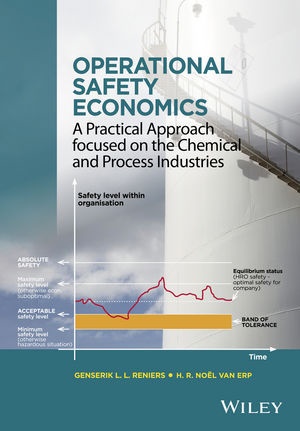Read more
Informationen zum Autor Genserik Reniers is Professor at the TU Delft (Safety Science Group, Faculty of Technology, Policy and Management, The Netherlands), Professor at the HUB campus of the KULeuven (CEDON, Faculty of Economics and Management, Belgium) and at the University of Antwerp (ARGoSS, Faculty of Applied Economic Sciences, Belgium). He received his PhD in Applied Economic Sciences from the University of Antwerp, after completing a Master's degree in Chemical Engineering at the Vrije Universiteit Brussels. His main research interests concern the collaboration and interaction between safety and security topics and socio-economic optimization within the chemical industry. Genserik has authored, co-authored, edited or co-edited more than 20 books in the field of safety and/or security in the process industries, and he is Receiving editor for the Journal of Loss Prevention in the Process Industries (JLPPI) , and Associate Editor of Safety Science , two very well-known academic journals in the research field. He has taught safety and security economics (as part of larger courses) since 2006 both at the University of Antwerp and at the HUB-campus of the KULeuven. Klappentext Describes how to make economic decisions regading safety in the chemical and process industries* Covers both technical risk assessment and economic aspects of safety decision-making* Suitable for both academic researchers and practitioners in industry* Addresses cost-benefit analysis for safety investments Zusammenfassung Describes how to make economic decisions regading safety in the chemical and process industries* Covers both technical risk assessment and economic aspects of safety decision-making* Suitable for both academic researchers and practitioners in industry* Addresses cost-benefit analysis for safety investments Inhaltsverzeichnis Preface xi Disclaimer xiv Acknowledgements xv List of Acronyms xvii 1 Introduction 1 1.1 The "Why" of Operational Safety 1 1.2 Back to the Future: the Economics of Operational Safety 3 1.3 Difficulties in Operational Safety Economics 4 1.4 The Field of Operational Safety within the Profitability of an Organization 5 1.5 Conclusions 6 References 7 2 Operational Risk, Operational Safety, and Economics 8 2.1 Defining the Concept of Operational Risk 8 2.2 Dealing with Operational Risks 10 2.3 Types of Operational Risk 11 2.4 The Importance of Operational Safety Economics for a Company 15 2.5 Balancing between Productivity and Safety 18 2.6 The Safety Equilibrium Situation or "HRO Safety" 19 2.6.1 HRO Principle 1: Targeted at Disturbances 20 2.6.2 HRO Principle 2: Reluctant for Simplification 21 2.6.3 HRO Principle 3: Sensitive toward Implementation 21 2.6.4 HRO Principle 4: Devoted to Resiliency 21 2.6.5 HRO Principle 5: Respectful for Expertise 22 2.7 The Egg Aggregated Model (TEAM) of Safety Culture 22 2.8 Safety Futures 24 2.9 The Controversy of Economic Analyses 25 2.10 Scientific Requirements for Adequate Economic Assessment Techniques 26 2.11 Four Categories of Data 27 2.12 Improving Decision-making Processes for Investing in Safety 28 2.13 Conclusions 29 References 30 3 Economic Foundations 31 3.1 Macroeconomics and Microeconomics 31 3.2 Safety Demand and Long-term Average Cost of Production 32 3.2.1 Safety Demand 32 3.2.2 Long-term Average Cost of Production and Safety 33 3.3 Safety Value Function 35 3.4 Expected Value Theory, Value at Risk, and Safety Attitude 37 3.4.1 Expected Value Theory 37 3.4.2 Value at Risk 38 3.4.3 Safety Attitude 39 3.5 Safety Utilities 40 3.5.1 Safety Utility Functions 40 3.5.2 E...

